A time-tested family favorite, this homemade challah bread is sweet, soft, and chewy. Braid this Jewish egg bread as an oblong or round challah loaf to celebrate Shabbat (the Jewish Sabbath), Rosh Hashanah (the Jewish New Year), or any special meal. Plus, it's perfect for making yummy french toast!
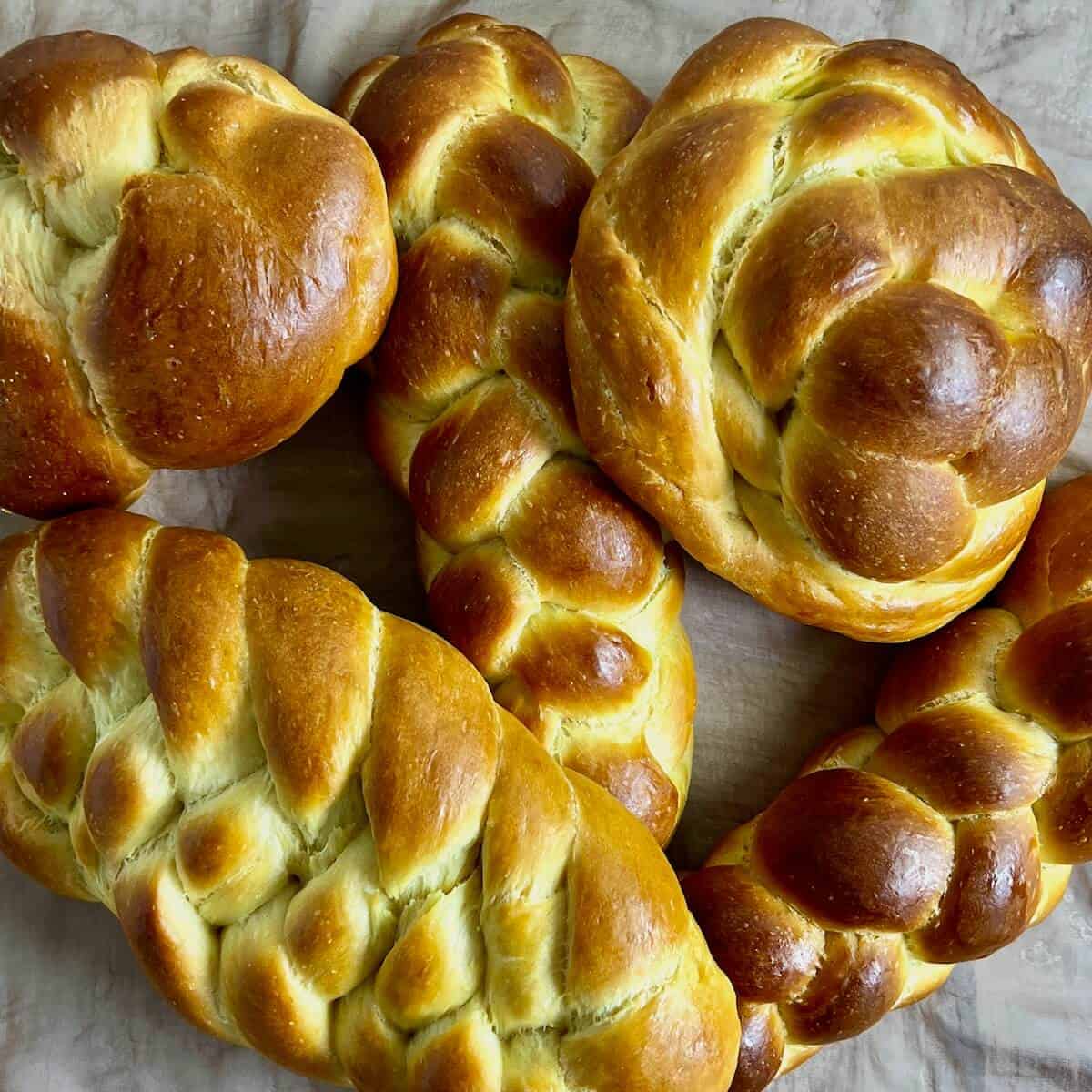
Jump to:
Why this recipe works
- An easy challah recipe needing only a few ingredients
- Vary the mix-ins or toppings to your liking
- Shape it as desired, including as a straight braided challah loaf for Shabbat (the Jewish Sabbath) or a round challah loaf for Rosh Hashanah (the Jewish New Year)
- Challah dough can be used to make a babka (a shaped and stuffed egg bread)
- Baked challah bread is great in french toast!
This is my time-tested, family-loved, and slightly sweet challah bread recipe. It's been called the Best Homemade Challah Ever. I won't argue with that!
I’ve been making challah bread for many years, for many occasions, and in a variety of shapes.
Sometimes I add chocolate chips or raisins to the dough, and sometimes I vary the toppings from the traditional sesame or poppy seeds to cinnamon sugar (kids generally like that one!).
This challah is soft, chewy, and slightly sweet. It's wonderful for celebrating the Sabbath, Rosh Hashanah (the Jewish New Year), or any day you'd like. If you delve deeper into the meaning of Shabbat and its traditions, this bread can hold even greater significance.
My challah recipe can be adapted for making babka, a shaped and stuffed egg bread, like my Apples & Honey Babka, Chocolate Babka, and Cranberry Wine Babka. And of course, challah makes fantastic french toast.
So give yourself a real treat and make the best homemade challah bread...ever!
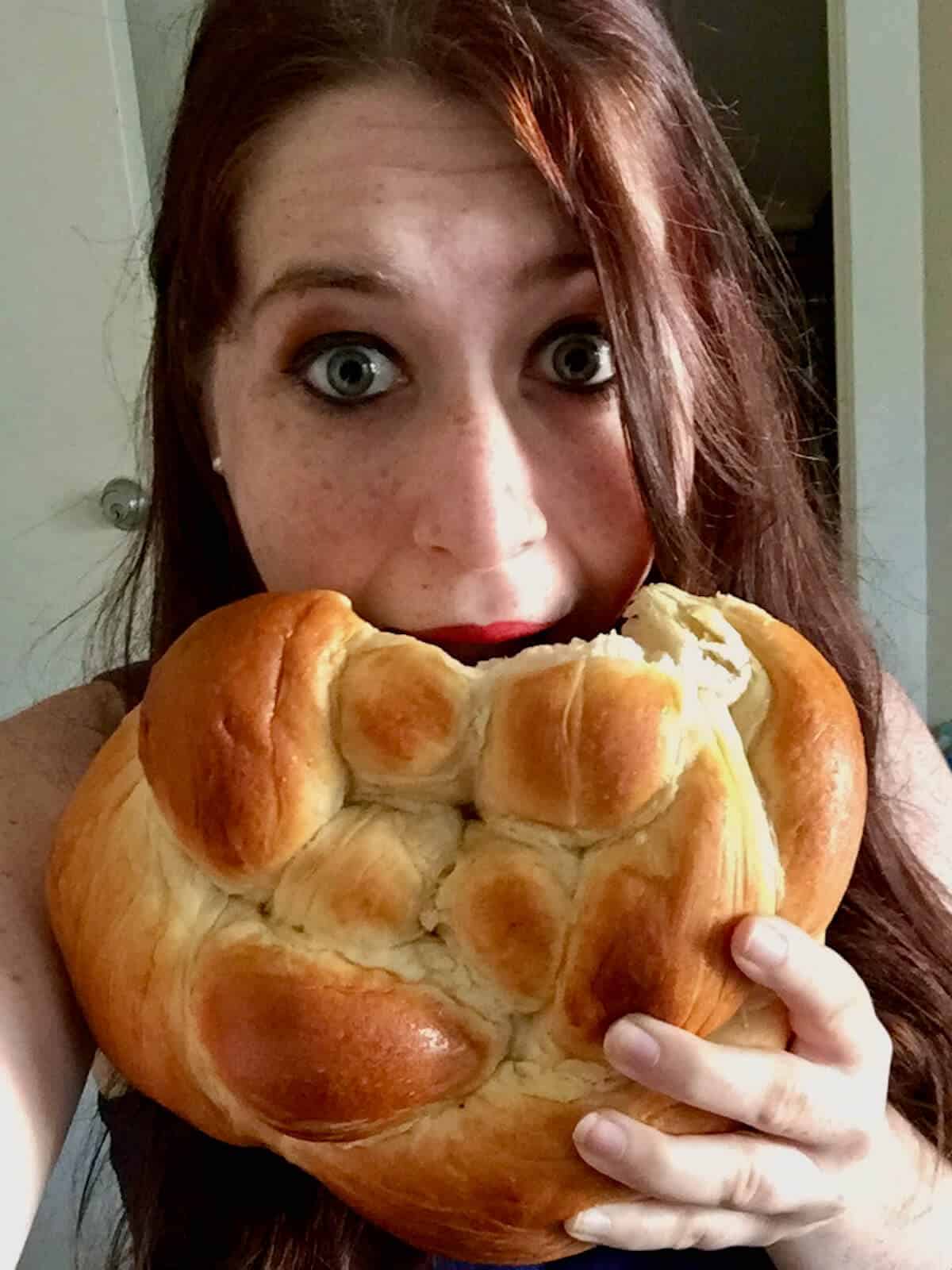
Challah can come in different shapes
Most types of bread aren’t associated with a specific shape, but challah, a Jewish egg bread similar to brioche, definitely is one of those. It's braided, either straight or round, and is instantly recognizable.
Braiding challah takes a little practice, but your reward is a beautiful shiny bread suitable for celebrations.
I have separate posts on how to shape challah, with detailed instructions on how to braid a three-strand, four-strand (straight and round), and six-strand (straight and flat) challah. And if you really want a bakery-worthy challah, try my eight-strand straight braided challah inspired by The Great British Bake Off (aka The Great British Baking Show). It's not hard, so have at it!
Baking bread, science, and math
Making challah with kids is especially fun, and provides so many ways to teach and learn!
When I would help my preschool students make challah every Friday, we would talk about “waking up and feeding the yeasties” while preparing the dough. I’d talk about how yeast is actually a living organism that makes the bread rise.
I’d ask them questions like “how many ¼ cups of water would go into 1 cup of water?” instilling in them the thought that math is something we use every day.
Learning to be careful when measuring out the ingredients taught them patience and control, as did stirring the ingredients carefully and watching how the dough takes shape in the bowl.
Yes, baking challah bread is a fun and educational experience.
Recipe Ingredients
You'll need the following ingredients to make this challah recipe:
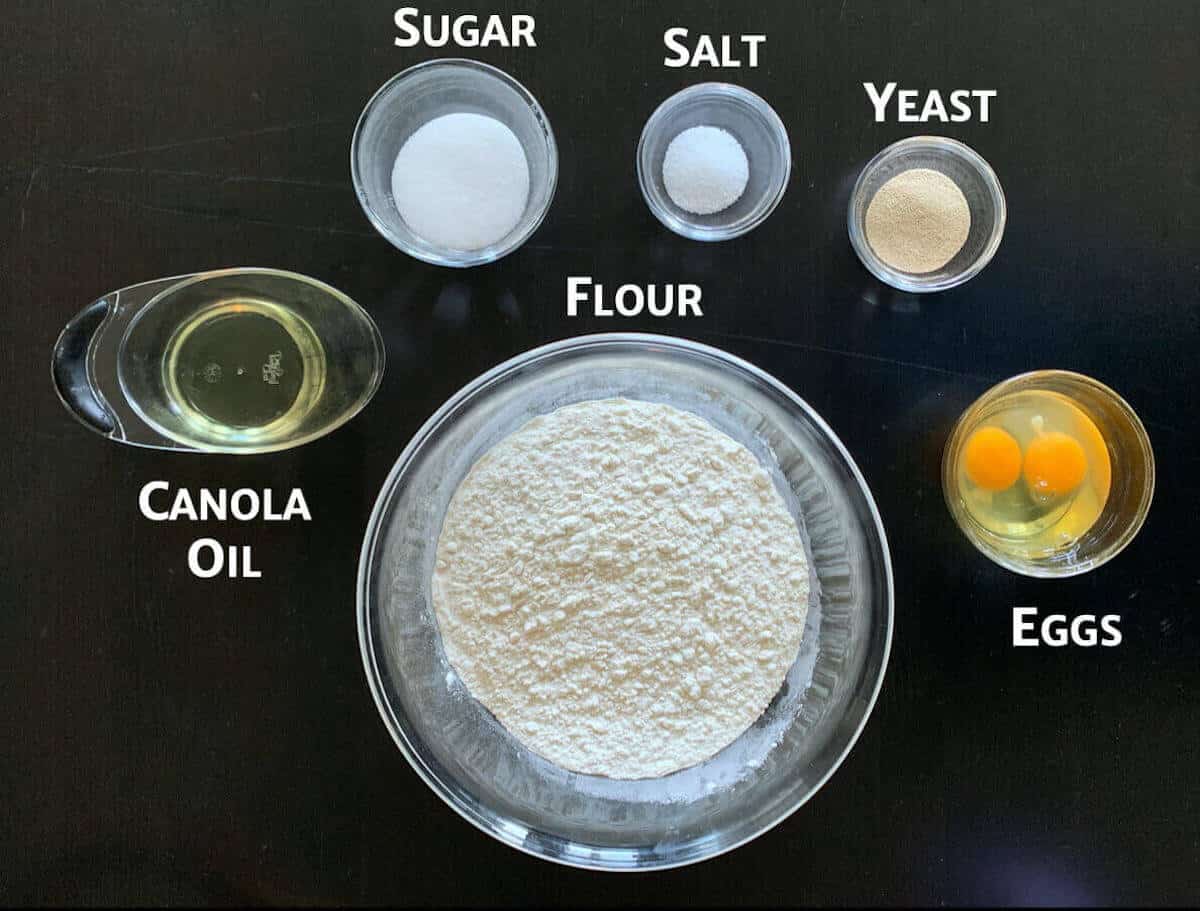
Ingredient Notes
As with most bread recipes, you need the basic bread ingredients: flour, water, yeast, and salt.
Yeast: I only use instant yeast (aka rapid rise) when I bake, which doesn't need to be proofed before mixing bread dough. With instant yeast, you just mix all the dough ingredients together and knead it for a few minutes.
If you use Active Dry yeast, then you might want to sprinkle yeast onto the warmed water with a teaspoon of sugar and allow it to sit for a few minutes before proceeding with the recipe. Letting it foam "proves" the yeast is active and ready to go to work. Otherwise, you'll end up with a bread doorstop, and no one wants that.
Eggs: The main difference between a basic bread dough and challah is that challah dough is enriched with eggs, like with a brioche recipe.
Canola oil: Oil is used instead of softened or melted butter to keep the bread dairy-free. That's especially important if you're keeping Kosher and want to serve the challah with a meal featuring meat. Jewish dietary laws forbid the mixing of milk and meat products at the same time.
Sugar: Challah is slightly sweetened for better flavor. Usually I use sugar, but substitute honey for the sugar, especially if I'm baking for a holiday that features honey (like the aforementioned Rosh Hashanah).
Mix-ins: These can be a fun way to add another flavor component to your challah. Some common mix-ins are raisins and chocolate chips, but you can experiment with other options like nuts, seeds, or chopped dried fruit.
Toppings: Sesame seeds and poppy seeds are common, and cinnamon sugar (1 teaspoon cinnamon mixed with 1 tablespoon granulated sugar) is a fun alternative. You can also go savory with spice mixes like za'atar. Get creative or leave it plain, your choice.
See recipe card for a full list of ingredients and measurements.
How to make challah bread
Step 1: Make the dough
Mix the flour, sugar, yeast, salt, eggs, canola oil, and water in the bowl of a stand mixer fitted with a dough hook on low speed (or in a bread machine set to the manual cycle). Knead the dough for about 5 minutes on medium-high speed (photo 1).
If you don't have a stand mixer or bread machine, mix the ingredients in a large bowl using a wooden spoon until it’s too stiff to stir, then turn out onto a floured surface and continue kneading until a smooth dough forms. Knead about 5 minutes more. If the dough seems too wet, add more flour, one tablespoon at a time, until the dough is slightly tacky.
If you're adding mix-ins manually (like raisins or chocolate chips), transfer the dough to a lightly floured surface and flatten the dough into a rough rectangle Sprinkle on a handful of the mix-in. Fold the dough over, flatten again, and sprinkle on another handful. Repeat until you've mixed in as much as you want. You can see an example of this process in the video for Sourdough Jalapeño Cheddar Bread.
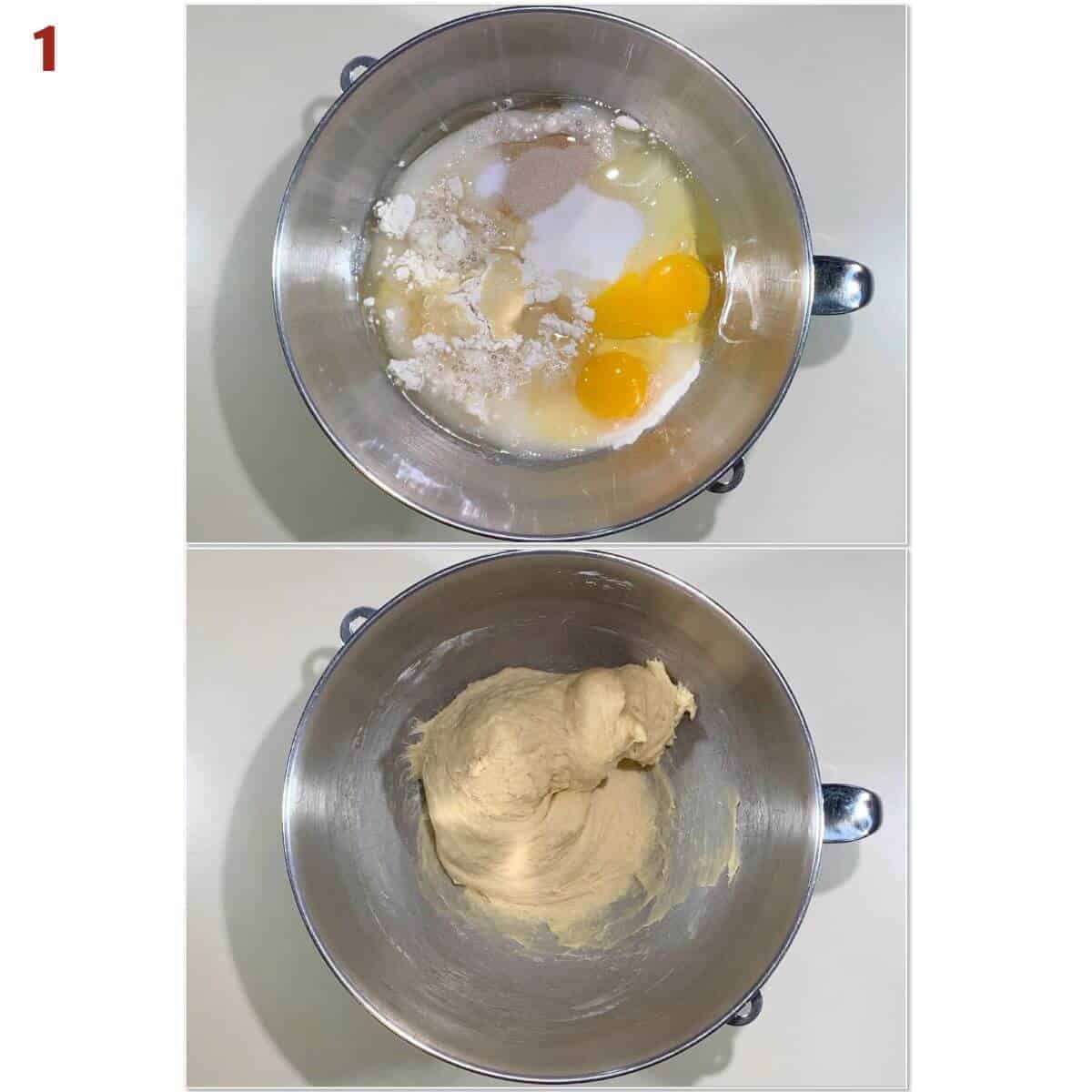
Step 2: Let the dough rise
Shape the dough into a ball and place in a covered, oiled bowl, sprayed with canola oil spray, smooth side up (photo 2). Let it rise 2 to 3 hours in a warm place (such as in the oven, turned off but with the light on) until it doubles in bulk.
You can also let it rise in the refrigerator overnight. Let the dough come to room temperature if refrigerated (about an hour) before proceeding with the shaping.
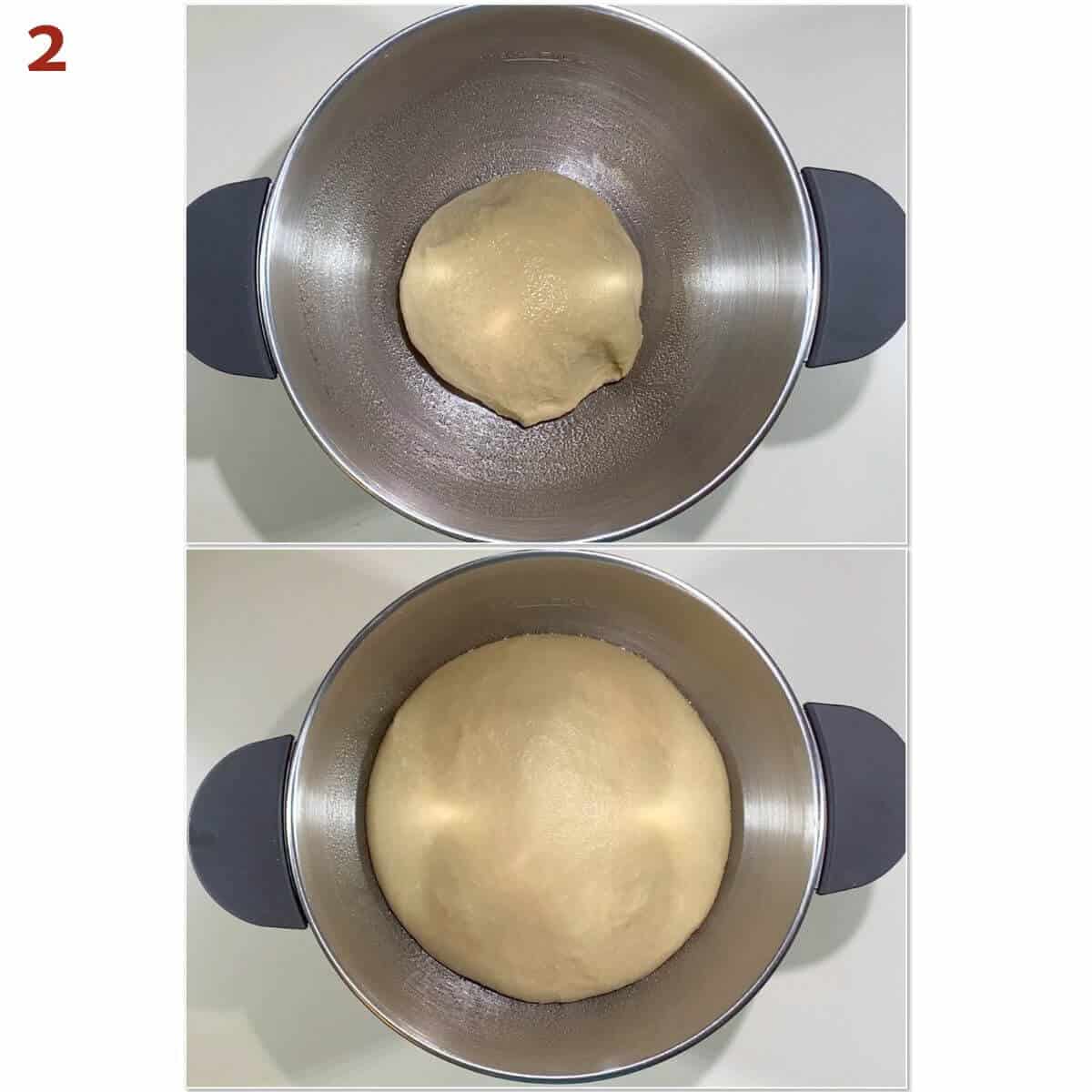
Step 3: Shape the dough
After the dough has doubled in size, gently knead it to release the air, then divide it into the number of ropes for your braid.
As I mentioned earlier, braiding is traditional, and three-strand (the easiest for beginners), four-strand, six-strand, and eight-strand straight braids are common. Sometimes you'll see round braided loaves (especially for Rosh Hashanah, the Jewish New Year).
Transfer the dough to a half sheet baking pan lined with a Silpat silicone mat or parchment paper. Let the shaped dough rise, covered with greased plastic wrap, for 45 minutes in a warm place while you warm the oven. This allows the dough to relax and get puffy again.
I usually make two smaller challah loaves out of one batch of dough, but a full-sized batch makes one good-sized challah.
Step 4: Bake the challah
Right before putting it in the oven, brush the dough with an egg wash (an egg whisked with 1 tablespoon of water) to get that shiny crust. If you're using any toppings, sprinkle them on now.
Bake the challah at 350ºF for 25 to 35 minutes, rotating the pan front to back halfway through the baking time. When the loaf is golden brown and it sounds hollow when tapped on the bottom (or reads 190°F on a digital thermometer), remove it from the oven and cool on a wire rack (photo 3).
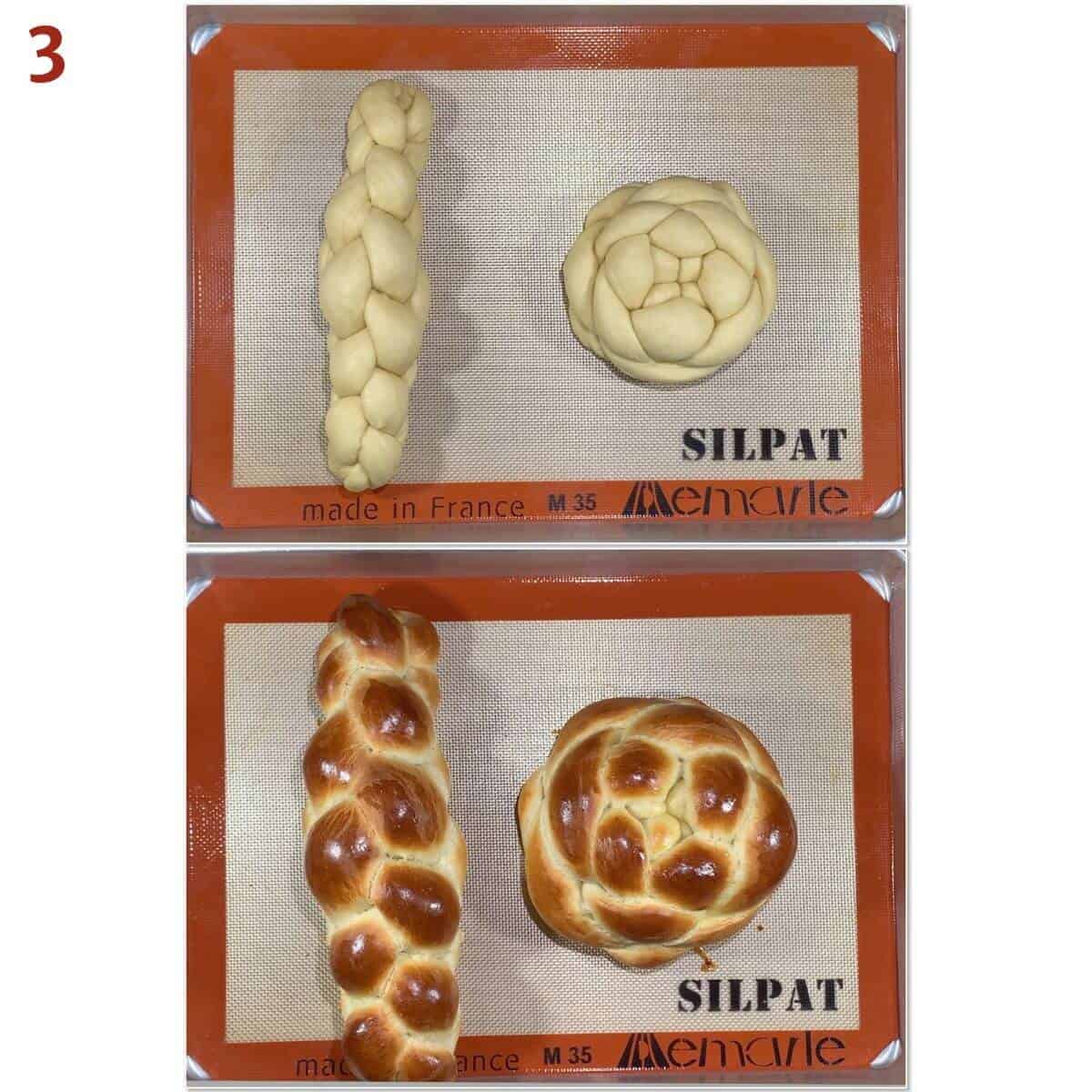
Storage instructions
Challah will last for several days on the counter in an airtight container. For longer term storage, freeze the loaf, well wrapped in plastic wrap and placed in an airtight container, for up to 4 to 6 months.
Questions asked and answered
Here are some questions you might have...
Generally speaking, bread flour is preferred for challah dough because it has a higher protein content than all-purpose flour. This allows the dough to have a stronger gluten structure, making it easier to shape and the bread will be less dense.
It’s hard to write how to pronounce the word challah. The beginning sound doesn’t exist in English. The “ch” is the anglicized version for the Hebrew letter “chet” which represents the sound you make when you’re trying to clear your throat, not the sound starting “cheese.” That’s why you’ll see the Jewish December holiday of Hanukkah sometimes spelled “Chanukkah.”
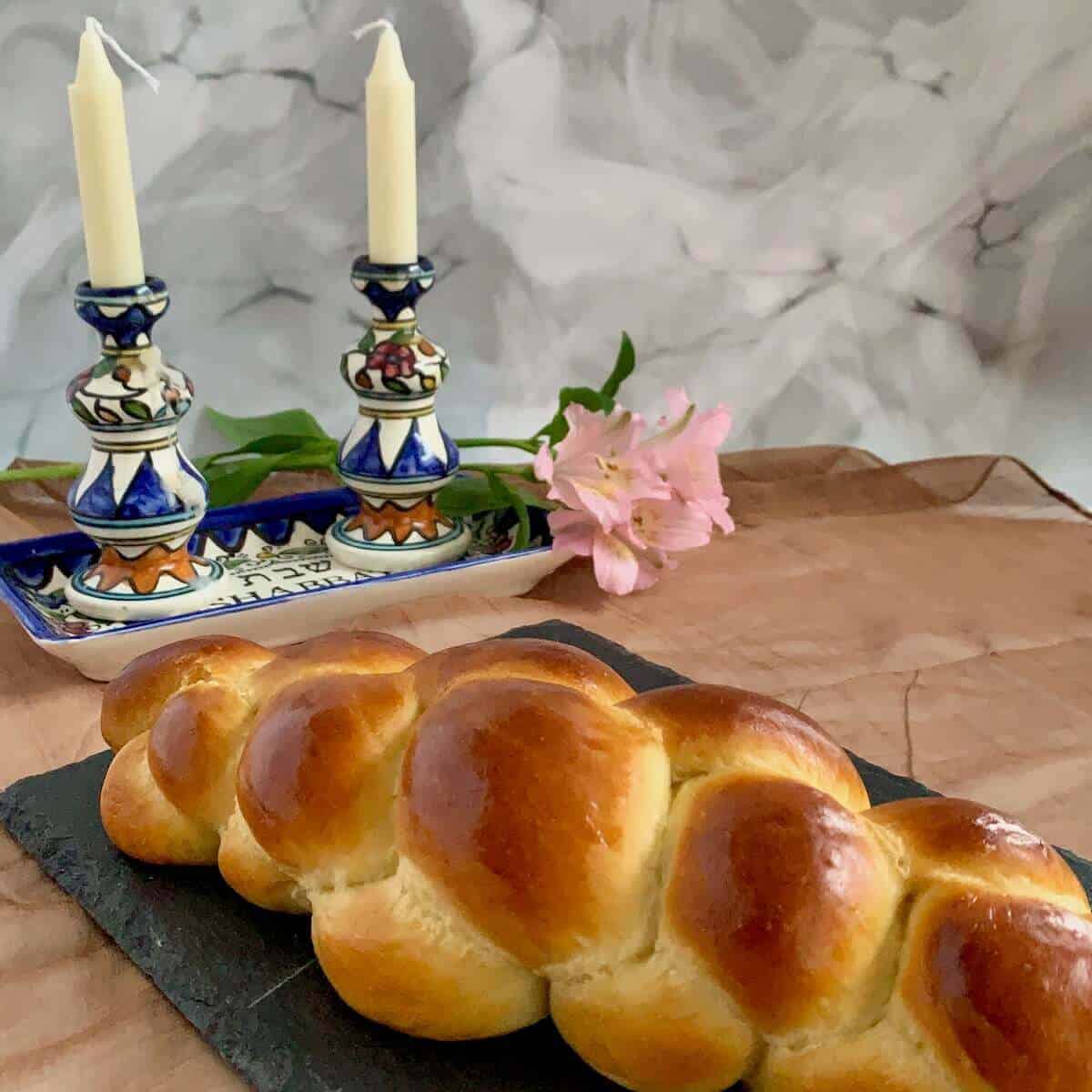
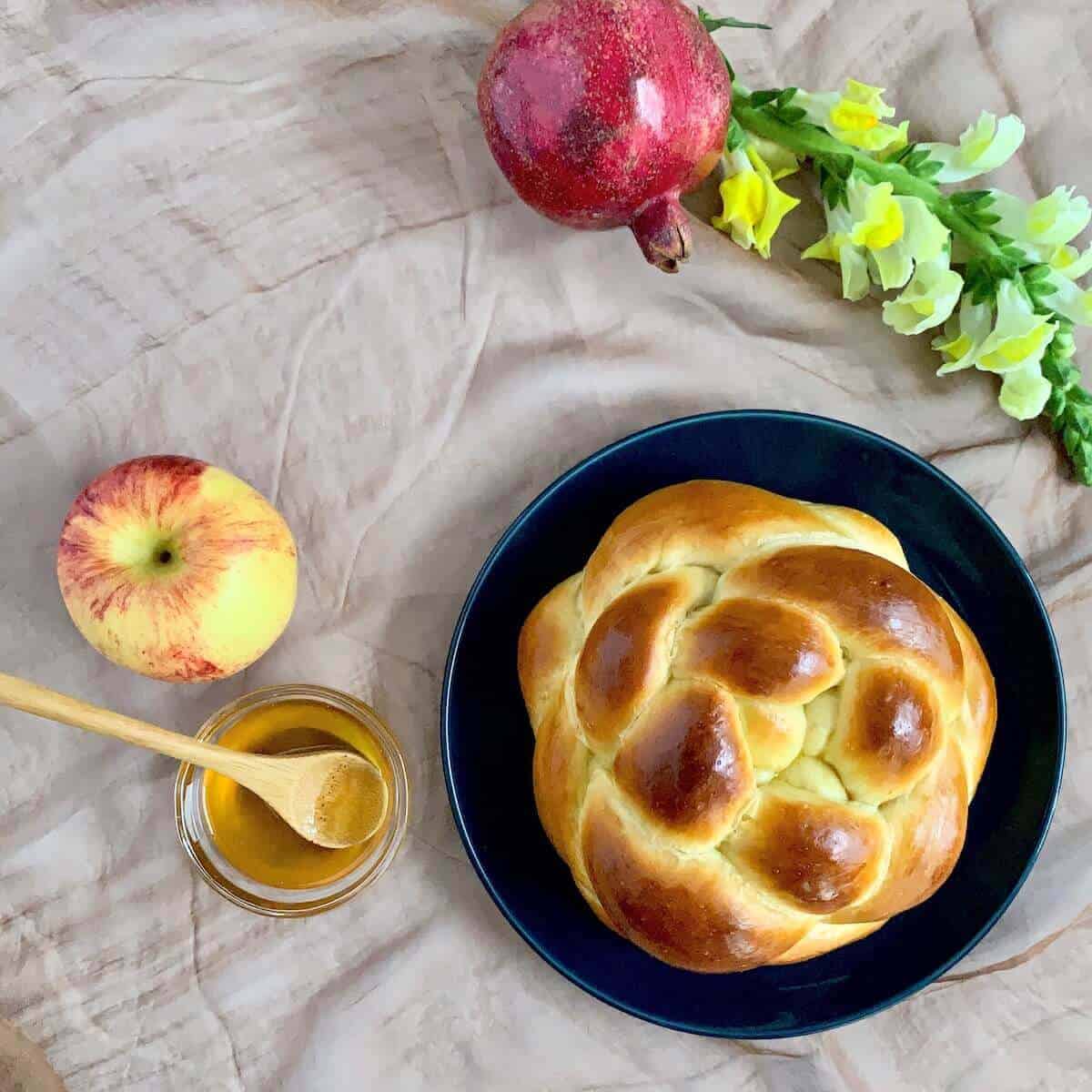
More shaped bread recipes to try
Recipe
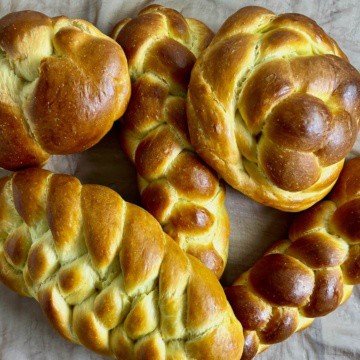
Best Challah Bread (Braided Egg Bread) Ever!
Equipment
Ingredients
For the dough
- 3½ cups bread flour, plus more as needed
- ¼ cup granulated sugar, see Recipe Notes
- 2 teaspoons instant yeast, or rapid rise, see Recipe Notes
- 1½ teaspoon kosher salt
- 2 large eggs, at room temperature
- ⅓ cup canola oil, see Recipe notes
- ½ to ⅔ cup water, warmed between 100°F to 110°F, see Recipe Notes
- mix-ins, optional, see Recipe Notes
For the topping
- 1 large egg, plus 1 tablespoon water, for egg wash
- toppings, optional, see Recipe Notes
Instructions
- Make the dough: Mix the flour, sugar, yeast, salt, eggs, canola oil, and water in the bowl of a stand mixer fitted with a dough hook on low speed (or in a bread machine set to the manual cycle). Knead the dough for about 5 minutes on medium-high speed.
- If you don't have a stand mixer or bread machine, mix the ingredients in a large bowl using a wooden spoon until it’s too stiff to stir, then turn out onto a lightly floured surface and continue kneading until a smooth dough forms. Knead about 5 minutes more. If the dough seems too wet, add more flour, one tablespoon at a time, until the dough is slightly tacky.
- If you're adding mix-ins (like raisins or chocolate chips), fold them in on a lightly floured surface. Flatten the dough into a rough rectangle, then sprinkle on a handful of the mix-in. Fold the dough over, flatten again, and sprinkle on another handful. Repeat until you've mixed in as much as you want. You can see an example of this process in the video for Sourdough Jalapeño Cheddar Bread.
- Shape the dough into a ball and place in a covered oiled bowl (lightly sprayed with canola oil spray), smooth side up. Let the dough rise for 2 to 3 hours in a warm place (such as in the oven with just the light on) until it doubles in bulk. You can also let it rise in the refrigerator overnight. Let the dough come to room temperature if refrigerated (about an hour) before proceeding with the shaping.
- Shape the dough: After the dough has doubled in size, gently knead it to release the air, then divide it into the number of ropes for your braid.
- Use whatever technique you’d like. Braiding is traditional, and three-strand, four-strand, six-strand braids, and eight-strand straight braids are common. Sometimes you'll see round braided loaves (especially for Rosh Hashanah, the Jewish New Year).
- Line a half sheet baking pan with a Silpat silicone mat or parchment paper. Transfer the shaped dough to the baking pan, then cover with lightly oiled plastic wrap.
- Let the shaped dough rise for 45 minutes in a warm place. Meanwhile, preheat the oven to 350 °F.
- Bake the challah: Whisk together the beaten egg with the water for the egg wash. Brush the egg wash all over the exposed surfaces of the dough, then sprinkle on any desired toppings, such as cinnamon sugar, sesame seeds, or poppy seeds.
- Bake the challah for 25 to 35 minutes, rotating the pan front to back halfway through the baking time. When the loaf is golden brown and it sounds hollow when tapped on the bottom (or reads 190 °F with a digital thermometer), remove it from the oven and cool on a wire rack.
- Slice (or tear), serve, and enjoy!
- Storage instructions: Challah will last for several days on the counter in an airtight container. For longer term storage, freeze the loaf, well wrapped in plastic wrap and placed in an airtight container, for up to 4 to 6 months.
- This recipe yields about 1¾ pounds (800 grams) of dough.

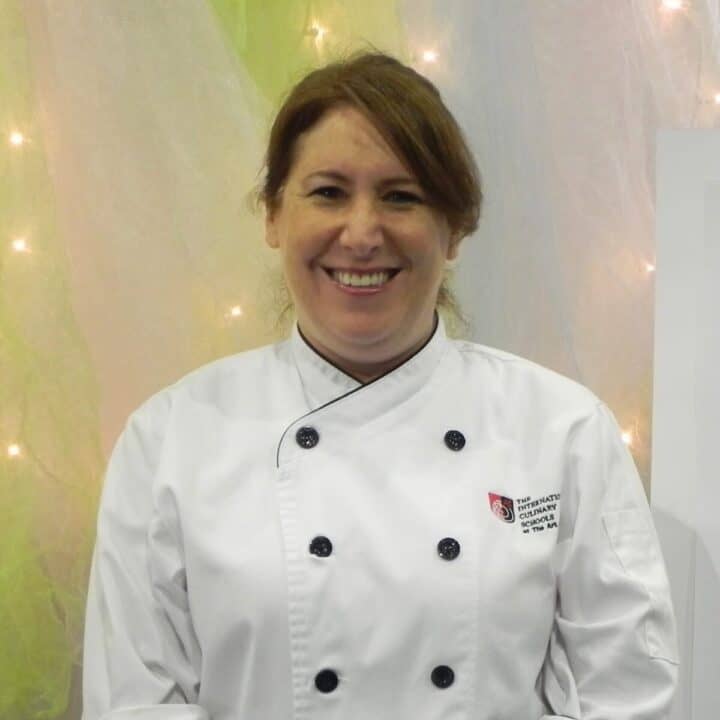
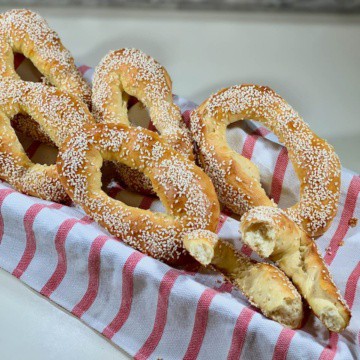
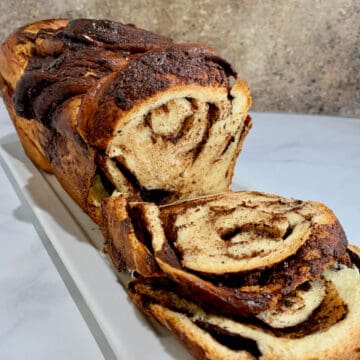

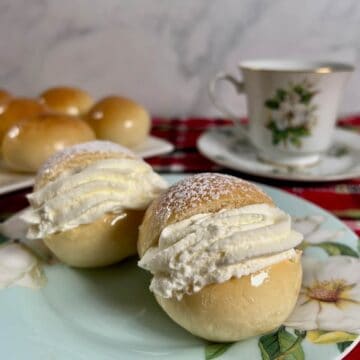
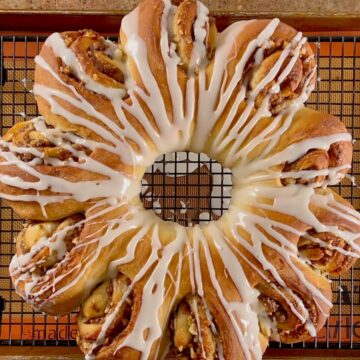
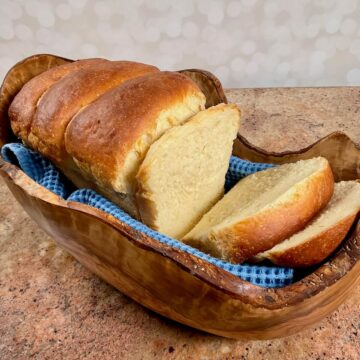
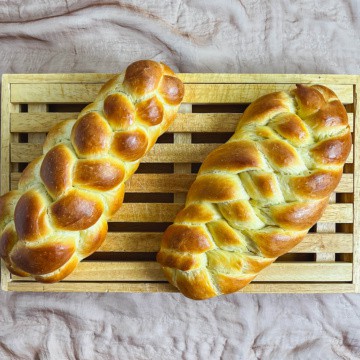
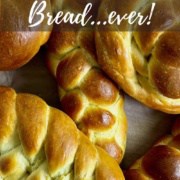
Bee cmarder says
where are the measurements for the ingredients
Tammy Spencer says
Hi Bee, if you scroll down to the recipe card at the bott Of the post (or click the “Jump to Recipe’ button, you’ll find the ingredients and procedure needed to make this delicious challah. Good luck and happy baking!
Debbie Kurtzman says
I remember watching you make the challah at TCEE! You had as much fun as the kids did!
L’Shana Tovah!
Dianne Sanders says
As usual very informative and entertaining , makes me wish I was in the kitchen with this family ?
Tammy says
Thanks for your kind words, Dianne!